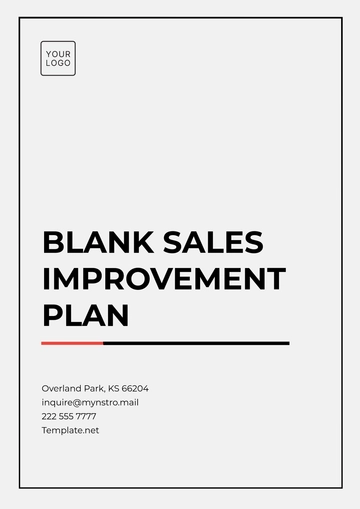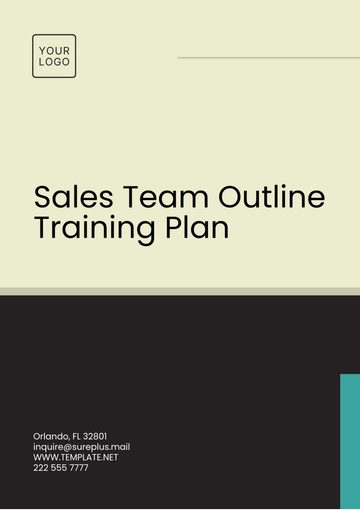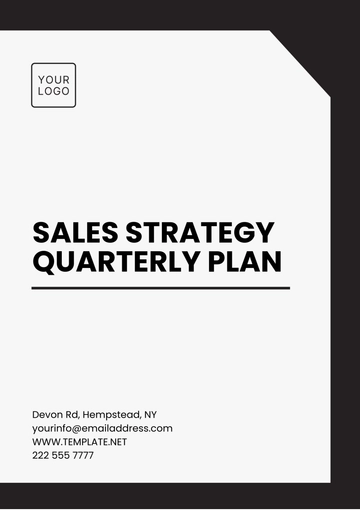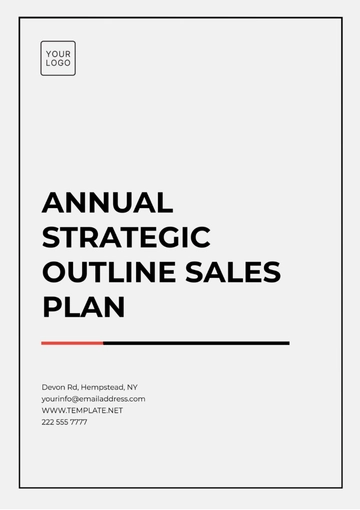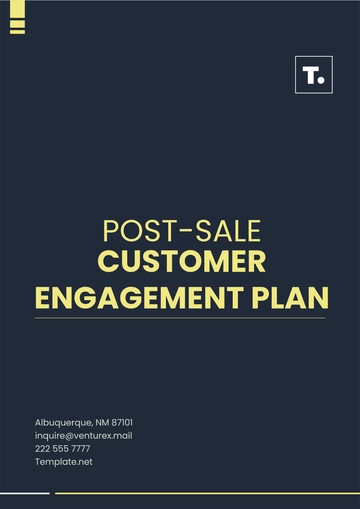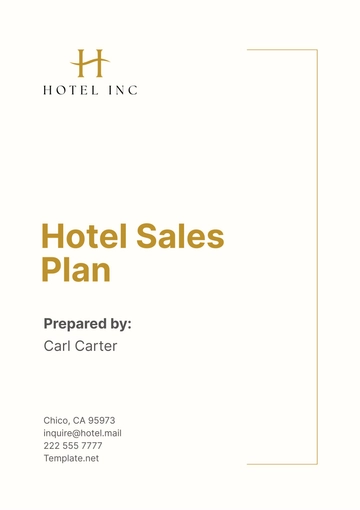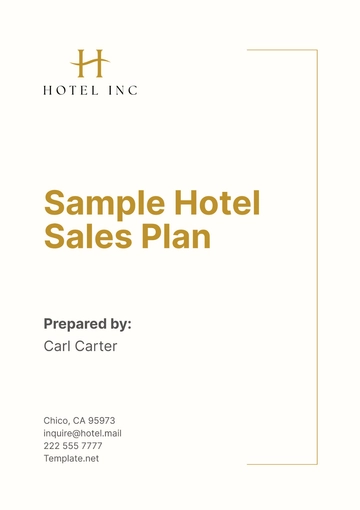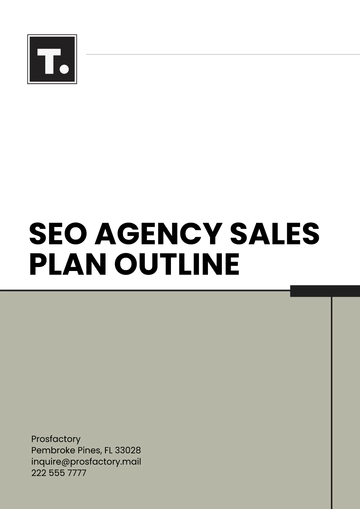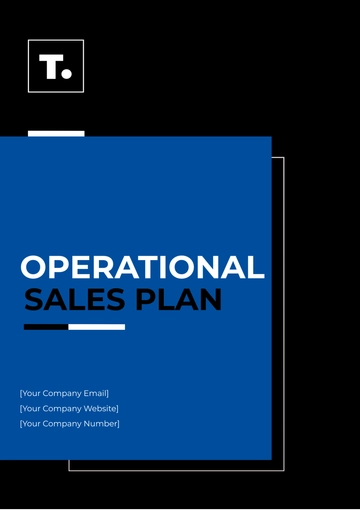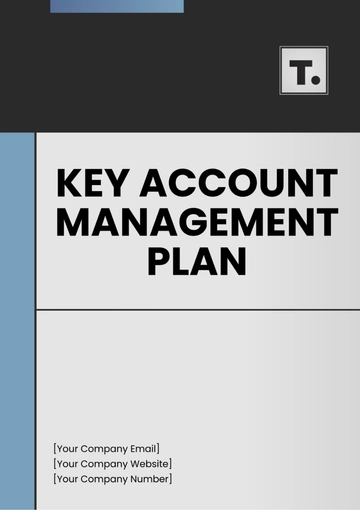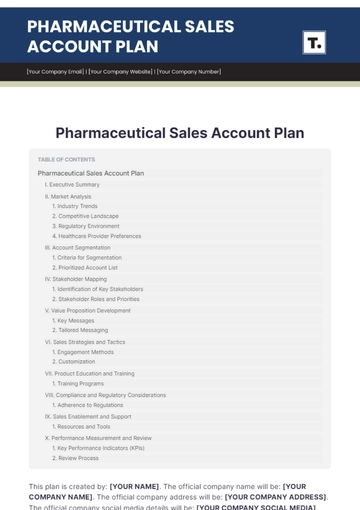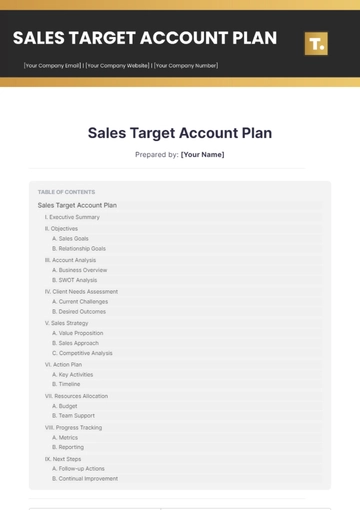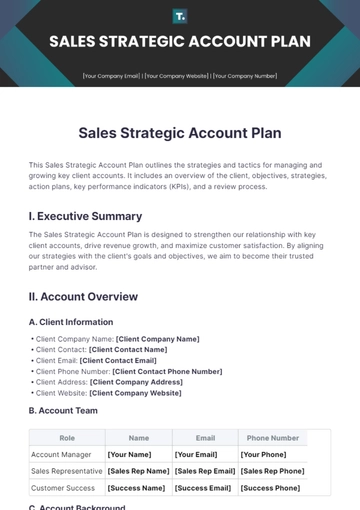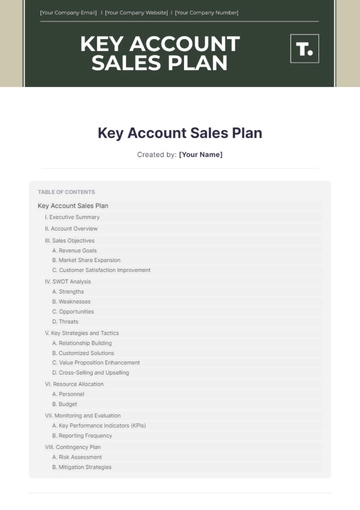Free Sales Team's Yearly Deal Plan

I. Introduction
Welcome to the comprehensive Yearly Deal Plan for the Sales Team at [Your Company Name]. This indispensable document serves as your strategic roadmap for the fiscal year [20xx], meticulously detailing our ambitions, methodologies, and actionable steps toward achieving unparalleled sales success. Crafted by our experienced team of sales strategists and data analysts, the plan outlines key objectives that align with our overarching business goals. In addition to pinpointing our sales targets, this document delves into the specific strategies we intend to employ to penetrate new markets, retain existing clients, and introduce new products. From quarterly milestones and key performance indicators to budget considerations and team responsibilities, this exhaustive guide is designed to leave no stone unturned in our pursuit of excellence. By following the tactical plans laid out in this document, we aim to meet and exceed our sales goals, ensuring a prosperous year ahead for [Your Company Name].
II. Sales Objectives for [20xx]
The year [20xx] is poised to be a transformative period for [Your Company Name], and to navigate this crucial year, we have laid down specific, measurable, attainable, relevant, and time-bound (SMART) objectives.
Increase Revenue by 20% Compared to [20xx]: Our primary objective is to escalate our revenue by 20% compared to last year. Achieving this goal will not only indicate robust growth but also provide the financial backbone to invest in other crucial areas like research and development and employee welfare programs.
Acquire 100 New Customers: Customer acquisition remains a key focus for the year. Targeting 100 new clients will not only diversify our revenue streams but also expand our brand's reach and recognition. We plan to achieve this through targeted marketing campaigns, partnerships, and penetrating new markets.
Retain 90% of Existing Customer Base: Customer retention is as vital as acquiring new ones, particularly because it's often more cost-effective to keep an existing customer than it is to acquire a new one. We aim to achieve a 90% retention rate through exceptional customer service, periodic engagement, and offering value-added services or products.
Launch 3 New Products and Achieve a 15% Sales Conversion Rate: We plan to introduce three new products into the market to diversify our offerings and meet the ever-evolving needs of our customers. These launches will be supported by aggressive marketing campaigns and channel partnerships. Our goal is to achieve a 15% sales conversion rate for these new products, indicating a healthy market demand and efficient sales processes.
By setting and rigorously following these objectives, we aim to ensure that [20xx] is one of the most successful years in the history of [Your Company Name]. These objectives serve as our guiding star, providing direction to all our strategies and tactical plans.
III. Sales Strategies
In alignment with our clearly defined objectives for [20xx], the following sales strategies have been meticulously crafted to serve as our tactical execution plan. These strategies are not only rooted in market analysis and internal capabilities but are also designed to be flexible and adaptable to the fast-paced changes in the business landscape. Below, we delve into the specific strategies, implementation plans, and timelines we've set to ensure a successful [20xx].
Strategy | Implementation Plan | Timeline |
|---|---|---|
Customer Segmentation | Target new industries and markets | 1st Quarter |
Upselling | Introduce new features to existing clients | 2nd Quarter |
Partnerships | Collaborate with industry influencers | 3rd Quarter |
Data-Driven Selling | Utilize analytics for personalized selling | Throughout the year |
Customer Segmentation: During the first quarter of [20xx], our focus will be on targeting new industries and markets to expand our customer base. Through detailed market research, we will identify potential sectors that align with our product offerings and develop targeted marketing campaigns to reach them.
Upselling: In Q2, our emphasis will shift towards maximizing revenue from our existing clients. We plan to introduce new features or services that add value to our current offerings. By personalizing these upsell opportunities, we aim to increase customer loyalty while also boosting our sales.
Partnerships: As we move into the third quarter, our strategy will involve forming strategic partnerships with industry influencers and opinion leaders. Collaborations like these will not only increase our product's credibility but also help us tap into an audience we might not have access to otherwise.
Data-Driven Selling: Throughout the year, we will be employing data analytics tools to inform and adapt our sales processes. Data-driven insights will allow us to understand customer behavior better, personalize our sales strategies, and dynamically adjust to market conditions.
By systematically implementing these strategies according to the outlined timelines, we intend to not just meet but exceed our sales objectives for the year [20xx].
IV. Quarterly Targets & Milestones
Quarter | Revenue Target | New Customer Target | Product Launch |
|---|---|---|---|
Q1 | $300,000 | 20 | Product A |
Q2 | $350,000 | 30 | Product B |
Q3 | $400,000 | 25 | - |
Q4 | $450,000 | 25 | Product C |
Quarterly Revenue Targets Chart
Q1 Targets and Milestones:
Revenue Target: Our goal for the first quarter is to generate $300,000 in revenue. This will set the pace for the remainder of the year and help us validate the effectiveness of our customer segmentation strategy.
New Customer Target: We aim to acquire 20 new customers from the industries and markets we have identified in our segmentation strategy.
Product Launch: The launch of Product A is slated for this quarter, and it is essential that the sales and marketing teams collaborate to achieve a 15% sales conversion rate for the new product.
Q2 Targets and Milestones:
Revenue Target: We aim to elevate our revenue to $350,000 during the second quarter. The focus on upselling to existing clients will be critical in achieving this milestone.
New Customer Target: The target for new customer acquisition is raised to 30, taking into consideration the potential success of Product B.
Product Launch: Product B will be introduced this quarter, accompanied by targeted marketing and sales campaigns.
Q3 Targets and Milestones:
Revenue Target: The revenue target for Q3 is set at $400,000. Our partnerships with industry influencers, initiated in this quarter, are expected to contribute significantly to this goal.
New Customer Target: A steady acquisition rate of 25 new customers is expected, even as we focus on consolidation and maximizing value from partnerships.
Q4 Targets and Milestones:
Revenue Target: We're aiming for a high mark of $450,000 in revenue for the final quarter, fueled by the holiday season and end-of-year procurement in businesses.
New Customer Target: The target for new customer acquisition remains at 25, but with an added focus on long-term contracts that will spill over into the next year.
Product Launch: Product C, our final new product for the year, will be launched this quarter, capitalizing on holiday sales and year-end budget expenditures in many corporations.
By defining these quarterly targets and milestones, we aim to make our annual objectives for [20xx] more achievable, providing the Sales Team at [Your Company Name] with clear goals and deadlines.
V. Key Performance Indicators (KPIs)
To measure the effectiveness of our strategies and ensure that we are on track to meet our objectives, we will use the following Key Performance Indicators (KPIs). These metrics will offer a quantitative assessment of our performance and give us valuable insights for possible adjustments or improvements throughout the year.
Customer Acquisition Cost (CAC):
Definition: This metric tells us how much it costs to acquire a new customer. It includes all expenses involved in the sales and marketing processes divided by the number of new customers acquired.
Importance: Monitoring CAC helps to ensure that we are spending our marketing and sales budgets efficiently. A lower CAC is preferable as it indicates a higher ROI.
Target: Our target for [20xx] is to reduce the CAC by 10% compared to [20xx].
Customer Lifetime Value (CLV):
Definition: CLV calculates the total value a customer contributes to the business over the entire length of their relationship with the company.
Importance: Understanding CLV allows us to see how valuable long-term relationships are and helps us in deciding how much to invest in customer retention versus acquisition.
Target: We aim for a 20% increase in CLV for [20xx] through upselling, cross-selling, and improving customer retention rates.
Sales Conversion Rate:
Definition: This KPI measures the percentage of leads that convert into paying customers.
Importance: It is a direct reflection of the efficacy of our sales funnel and indicates how well our sales team is performing.
Target: Our target is to achieve a 15% sales conversion rate for new products launched in [20xx] and to maintain an overall conversion rate of 10%.
Revenue Growth Rate:
Definition: This metric measures the rate at which the company's revenue is increasing or decreasing, usually calculated on a monthly or yearly basis.
Importance: Revenue growth is an indicator of market traction and business scalability. A steadily growing revenue rate is a positive sign for stakeholders.
Target: Our objective is to increase the revenue growth rate by 20% in [20xx] compared to the previous year.
By consistently tracking these KPIs, we can quickly identify both successful strategies worth doubling down on and areas that need improvement, thereby ensuring that we meet or even exceed our [20xx] sales objectives for [Your Company Name].
VI. Budget and Resource Allocation
As we set our sights on achieving our ambitious sales objectives for the year [20xx], prudent budget and resource allocation is pivotal. Having a well-defined budget enables us to prioritize our spending in areas that directly contribute to revenue generation and long-term growth. Here is a detailed breakdown of our budget and the rationale behind each allocation.
Budget Resources Breakdown
Marketing: $50,000
Personnel: $150,000
Training and Development: $20,000
Technology and Advancement: $30,000
By allocating our resources wisely, we lay the foundation for achieving our yearly objectives. Each budget item is strategically aligned with our goals and KPIs, providing us with a roadmap to financial and operational success for [Your Company Name] in [20xx].
VII. Case Studies
We present a selection of case studies that exemplify the effectiveness of our strategies and approach in achieving various sales objectives. These real-world examples not only validate our methods but also offer valuable insights into the practical application of our sales plans. Below are the specifics:
[Company X]
Objective: Market Penetration
Outcome: 25% Growth
[Company Y]
Objective: Customer Retention
Outcome: 90% Retention
VIII. Team Responsibilities
The foundation of any successful sales plan is a team that knows its roles and responsibilities inside and out. By clearly defining what each team member is accountable for, we pave the way for a more efficient, collaborative, and effective process. Below is an outline of key personnel and their designated roles and responsibilities for the sales year of [20xx]:
Team Member | Role | Responsibility |
|---|---|---|
[Name] | Sales Manager | Overall leadership |
[Name] | Account Executive | Customer relations |
[Name] | Data Analyst | Sales analytics |
IX. Risk Management
In any sales strategy, it's essential not just to plan for success but also to prepare for potential setbacks. Our risk management approach is designed to identify and mitigate various challenges that could hamper our sales objectives. We perform an exhaustive analysis to recognize potential risks such as economic downturns, increased market competition, and supply chain disruptions. Once these risks are identified, we establish contingency plans tailored to each scenario. These plans can range from financial cushions and strategic partnerships to alternative supply chain options and pivot strategies. By being proactive in our risk management, we aim to make our sales strategy resilient, adaptable, and better equipped to deal with uncertainties, thus safeguarding our business goals and stakeholder interests for [20xx] and beyond.
X. Review and Monitoring Plan
To ensure that our Yearly Deal Plan remains effective and aligned with our goals, we have instituted a rigorous review and monitoring process. This involves scheduled quarterly reviews where the team will convene to assess our progress against the set objectives, Key Performance Indicators (KPIs), and milestones. These reviews serve as both a performance check and a recalibration session. If any metrics are not meeting expectations or if unforeseen challenges have emerged, this is the time to adjust our strategies and reallocate resources accordingly. Through this ongoing cycle of evaluation and adaptation, we aim to maintain a flexible, responsive sales strategy that can pivot as needed, optimizing our path to achieving and even exceeding our goals for [20xx].
XI. Conclusion
The Yearly Deal Plan for [20xx] serves as much more than just a static document; it is a dynamic, actionable roadmap engineered to guide our sales team towards unprecedented success. By meticulously aligning the team's efforts with company-wide objectives, we have set the stage for a harmonious, focused journey towards our goals. This plan not only outlines our ambitions but also equips us with the strategies, resources, and contingency measures needed to realize them. Through regular review and real-time adjustments, we will ensure that we are always on the most effective path. In sum, this plan is not just a declaration of intent; it is a comprehensive guide that will steer us through the opportunities and challenges that [20xx] has to offer, pushing us ever closer to achieving and surpassing our sales targets.
- 100% Customizable, free editor
- Access 1 Million+ Templates, photo’s & graphics
- Download or share as a template
- Click and replace photos, graphics, text, backgrounds
- Resize, crop, AI write & more
- Access advanced editor
Navigate your sales team to success with Template.net's Sales Team's Yearly Deal Plan Template. It is fully editable and customizable using ouir Ai Editor Tool to create strategy planning and performance tracking. Available in Template.net, it's your all-in-one solution for a stellar sales performance. Plan smarter, act faster for your company.
You may also like
- Finance Plan
- Construction Plan
- Sales Plan
- Development Plan
- Career Plan
- Budget Plan
- HR Plan
- Education Plan
- Transition Plan
- Work Plan
- Training Plan
- Communication Plan
- Operation Plan
- Health And Safety Plan
- Strategy Plan
- Professional Development Plan
- Advertising Plan
- Risk Management Plan
- Restaurant Plan
- School Plan
- Nursing Home Patient Care Plan
- Nursing Care Plan
- Plan Event
- Startup Plan
- Social Media Plan
- Staffing Plan
- Annual Plan
- Content Plan
- Payment Plan
- Implementation Plan
- Hotel Plan
- Workout Plan
- Accounting Plan
- Campaign Plan
- Essay Plan
- 30 60 90 Day Plan
- Research Plan
- Recruitment Plan
- 90 Day Plan
- Quarterly Plan
- Emergency Plan
- 5 Year Plan
- Gym Plan
- Personal Plan
- IT and Software Plan
- Treatment Plan
- Real Estate Plan
- Law Firm Plan
- Healthcare Plan
- Improvement Plan
- Media Plan
- 5 Year Business Plan
- Learning Plan
- Marketing Campaign Plan
- Travel Agency Plan
- Cleaning Services Plan
- Interior Design Plan
- Performance Plan
- PR Plan
- Birth Plan
- Life Plan
- SEO Plan
- Disaster Recovery Plan
- Continuity Plan
- Launch Plan
- Legal Plan
- Behavior Plan
- Performance Improvement Plan
- Salon Plan
- Security Plan
- Security Management Plan
- Employee Development Plan
- Quality Plan
- Service Improvement Plan
- Growth Plan
- Incident Response Plan
- Basketball Plan
- Emergency Action Plan
- Product Launch Plan
- Spa Plan
- Employee Training Plan
- Data Analysis Plan
- Employee Action Plan
- Territory Plan
- Audit Plan
- Classroom Plan
- Activity Plan
- Parenting Plan
- Care Plan
- Project Execution Plan
- Exercise Plan
- Internship Plan
- Software Development Plan
- Continuous Improvement Plan
- Leave Plan
- 90 Day Sales Plan
- Advertising Agency Plan
- Employee Transition Plan
- Smart Action Plan
- Workplace Safety Plan
- Behavior Change Plan
- Contingency Plan
- Continuity of Operations Plan
- Health Plan
- Quality Control Plan
- Self Plan
- Sports Development Plan
- Change Management Plan
- Ecommerce Plan
- Personal Financial Plan
- Process Improvement Plan
- 30-60-90 Day Sales Plan
- Crisis Management Plan
- Engagement Plan
- Execution Plan
- Pandemic Plan
- Quality Assurance Plan
- Service Continuity Plan
- Agile Project Plan
- Fundraising Plan
- Job Transition Plan
- Asset Maintenance Plan
- Maintenance Plan
- Software Test Plan
- Staff Training and Development Plan
- 3 Year Plan
- Brand Activation Plan
- Release Plan
- Resource Plan
- Risk Mitigation Plan
- Teacher Plan
- 30 60 90 Day Plan for New Manager
- Food Safety Plan
- Food Truck Plan
- Hiring Plan
- Quality Management Plan
- Wellness Plan
- Behavior Intervention Plan
- Bonus Plan
- Investment Plan
- Maternity Leave Plan
- Pandemic Response Plan
- Succession Planning
- Coaching Plan
- Configuration Management Plan
- Remote Work Plan
- Self Care Plan
- Teaching Plan
- 100-Day Plan
- HACCP Plan
- Student Plan
- Sustainability Plan
- 30 60 90 Day Plan for Interview
- Access Plan
- Site Specific Safety Plan


